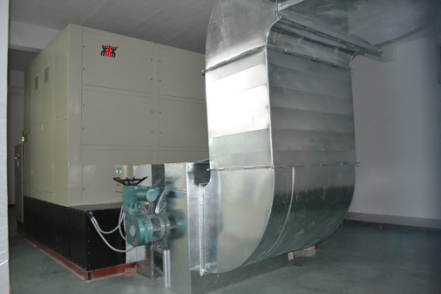Discussion on the origin of a gear steel containing debris
After the molten steel was refined by LF and fed with Al wire, the inclusions not only did not decrease, but continued to increase. The inclusions after feeding the Al wire increased nearly 10 times than before the LF operation, and the inclusions with a particle size larger than 355 m were more. This is a very abnormal phenomenon. We believe that this may be brought in by foreign inclusions. From the test results, it was found that the inclusions in the rolled material were relatively small, and there was no large-sized inclusions, so that they were not classified. After the large inclusions with a particle size larger than 355m were removed, the inclusions of each station showed a significant downward trend in both the overall content and the content of different size distributions. The inclusions of different particle sizes after classification were observed under a microscope.
After the LF refining, the larger inclusions (more than 355m) in the steel are irregular and angular inclusions; most of these inclusions are caused by the erosion of the refining slag into the molten steel or lining refractory, not It is a deoxygenated product. Therefore, the improvement of the operating system of the LF station (such as argon blowing intensity, sedation time, etc.) is necessary. After the molten steel is fed to the Al wire, the proportion of the spherical inclusions is obviously increased, indicating that the feeding of the Al wire has certain advantages for the spheroidization of the inclusions. It can be clearly seen that the inclusions having a particle diameter of less than 180 m are substantially spherical. This further confirms the inference that large size inclusions are foreign inclusions.
The qualitative analysis of inclusions is to investigate the metallurgical effect of LF refining and feeding Al wire (110m). The inclusions of different sampling stations are divided into three types: opaque, translucent and transparent inclusions for energy spectrum analysis to determine its basic composition. The inclusions before and after LF refining are mainly composed of composite inclusions of SiO2 and MnO. After the aluminum wire is fed, the inclusions are converted from manganese silicate to manganese aluminosilicate. Therefore, feeding the aluminum wire in the steel can not only further reduce the dissolved oxygen in the molten steel, but also change the morphology of the inclusions. The aluminum wire feeding in the steel can prevent the austenite grain coarsening and the deformation austenite recrystallization during heating. The growth of the crystal grains is advantageous for obtaining low- and high-magnification detection of the quality of the rolled material of the fine grain 23.
Low magnification results generally loose center loose segregation A type inclusions fine series B type inclusions fine series C type inclusions fine series D type inclusions fine series 05005100500510510255 4th Dong Yanwu et al: 20CrNiMoH gear steel inclusions Source analysis 20CrNiMoH requirements for inclusions are Class A and Class B inclusions, Class C and Class D inclusions. The test results of the samples show that the inclusion level can fully meet the requirements of steel grades. The classification of Class A inclusions is higher than that of other types of inclusions. In actual production, attention should be paid to strengthening desulfurization treatment.
Sampling analysis of 20CrNiMoH gear steel at different refining stations shows that the large inclusions in the steel are mainly foreign inclusions, and the operation process should be strictly controlled in production to prevent or reduce the introduction of foreign inclusions into the molten steel; After that, the inclusions are transformed from MnOSiO2 inclusions to MnOSiO2Al2O3 composite inclusions, and the degree of spheroidization of inclusions is improved. Under the existing process conditions, the inclusions of 20CrNiMoH gear steel can meet the rating requirements, but attention should be paid to strengthening the desulfurization process and reducing the class A. The number of inclusions.
Industrial Electric Boiler
heating storage equipment can provide hot water (<85℃),hot air (<400℃),heat conduction
oil(<300℃) and high temperature steam (100~200℃).
The boiler is widely used in printing drying industry, painting industry , food
processing industry and many other industries heating.
Related Products:hot water supply boiler,steam generating boiler,heat conduction oil furnace.

Industrial Electric Boiler,Energy Saving Industrial Electric Boiler,High Voltage Industrial Electric Boiler,Industrial Hot Air Heater
Dalian Transen Technology Co.,Ltd. , https://www.transen-china.com